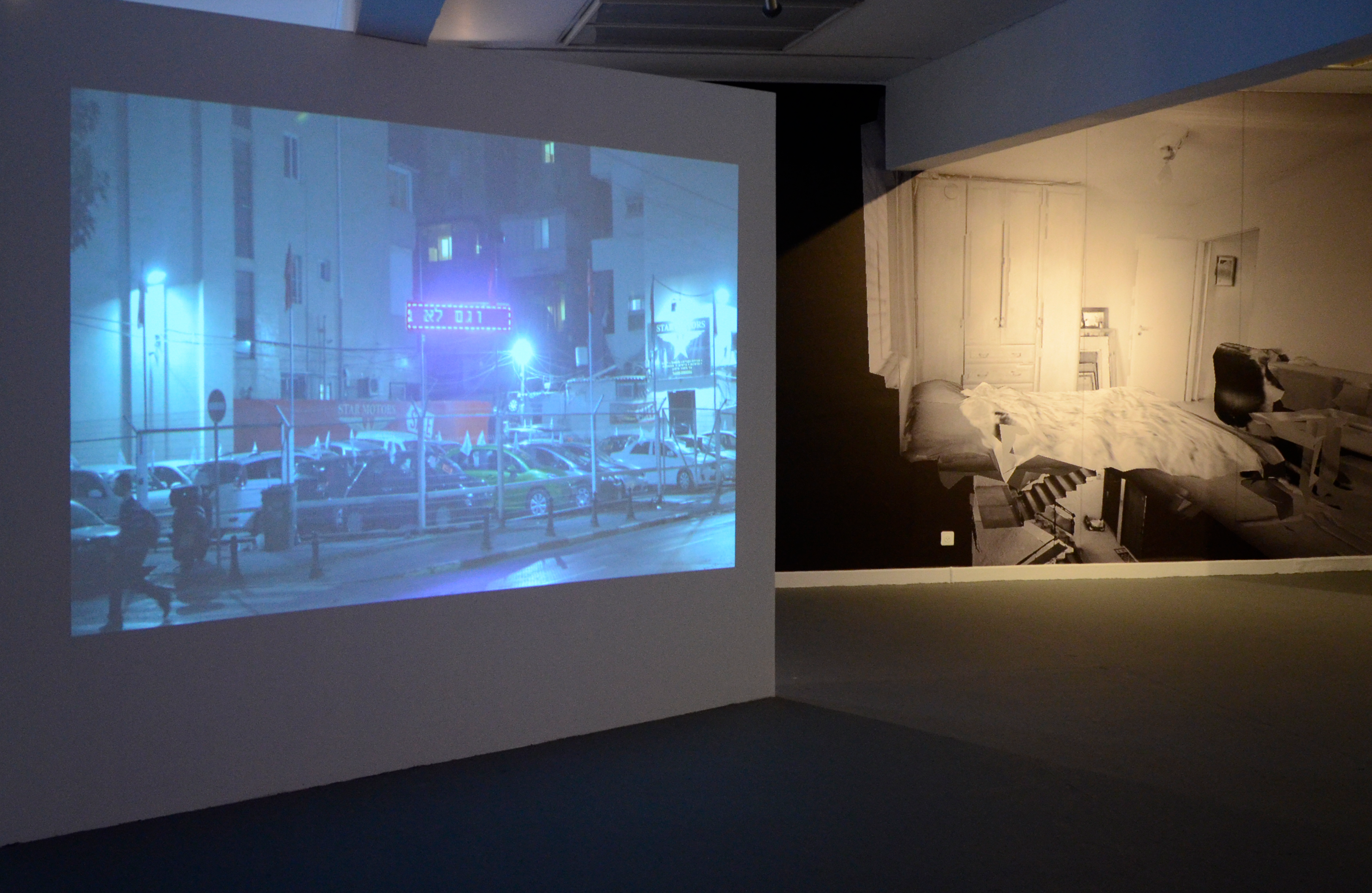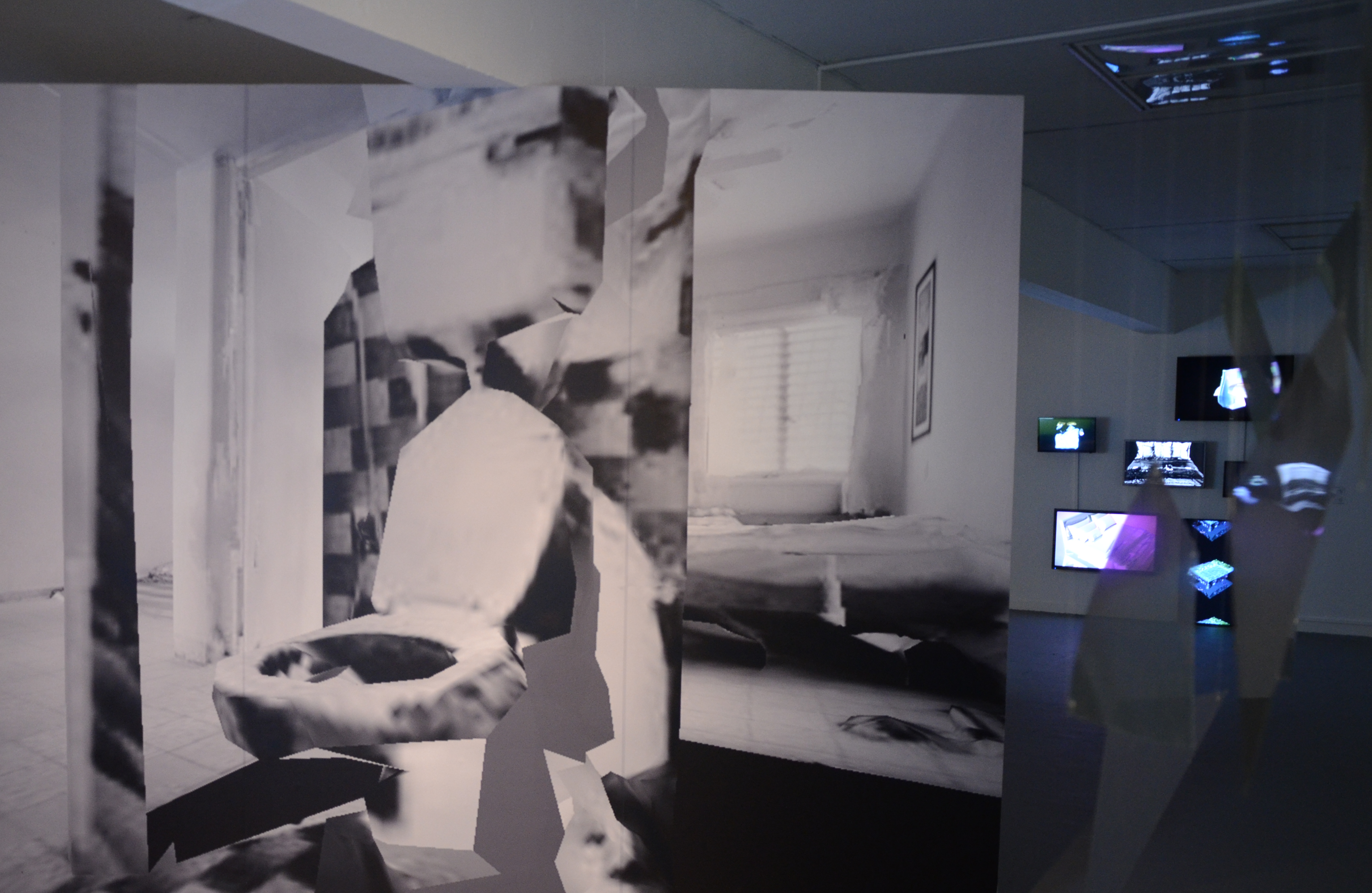
The Blazing World, 2019, Haifa Museum of Art
A group exhibition exploring the sci-fi landscapes of a feminst world
Presenting: Maya Attoun, Efrat Gal-Noor, Elham Rokni, Naama Roth
When we try to imagine a world that is not based on Western gender conceptions we are in fact treading in the realm of science fiction; since we must imagine a society and a history entirely different from those we have known for centuries.
Defining the science fiction genre is an elusive task; however, one of its abiding principles is that it is based on scientific logic. The genre is often seen as masculine, yet in fact it was invented by a woman. In 1818, Mary Shelley published the first science fiction novel, Frankenstein; or,
the Modern Prometheus. Over the years, particularly in the 1970s, with the rise of the second feminist wave in the U.S., many feminist writers have made use of science fiction in order to describe feminist societies that exist in a different social, sexual, and biological reality. The artists
participating in this exhibition also propose different realities. They create representations of the landscape that seem to have been taken from another world, but in fact are deeply rooted in everyday life.
Efrat Galnoor attempts to subvert the Western landscape tradition, which is based on a single viewpoint of the bourgeois white male. She uses a color palette that is not "realistic," disrupts the sequence of the painting and the laws of perspective, and adds "bursts" of pigment. She wanders through the real and the painterly landscape, investigating it, and representing it using new means.
Na'ama Roth also engages with local landscapes, via the image of a palm tree, as well as the outdoor sculptures created by artist Batia Lichansky. Lichansky's monuments marking Zionist events dot the Israeli landscape. The palm tree, as well as these public monuments, have become a feature of the landscape, although both constitute foreign interventions (in fact, most of the palm trees in Israel were imported). Roth uproots them from the landscape of which they seem to be a natural part, transferring them to an intermediate space in which they exist between two and three dimensions, between matter and representation.
Maya Attoun provides the exhibition's soundscape with her sound installation Duration (2018). The work is a recording of the duration of time it took the artist to create a drawing in her artist's book – a diary she published on the occasion of the 200th anniversary of the publication of Frankenstein. The disembodied sound is amplified, turning the museum gallery from a "quiet" space into a living, breathing, grating, itchy, and prickly one.
Elham Rokni turns her gaze to the landscapes of her memory, as a child born in Tehran who arrived in Israel with her family at the age of nine. Her connection with Iran is based mostly on visual images taken from the internet. In her works she depicts fantastic scenes of mosques floating in space or existing in a flattened world of orientalist ornament that is at the same time feminine and Western. This is not a precise reproduction of rich Islamic ornamentation, but rather an abstraction existing solely in her works, from the perspective of a Jewish girl in Iran and a Western woman and immigrant in Israel. Rokni thereby creates a world of landscapes that are alien and familiar, fantastic and specific, simultaneously local and foreign.
* The title of the exhibition is based on the title of the first proto-science fiction novel from 1666, written by Margaret Cavendish
Lines of Light Ranged In The Nonspace of The Mind, 2020, Haifa Museum of Art
A group exhibition exploring the sense of spacial collapse between the physical and the virtual as it was experienced and expediatednduring lockdown.
Presenting: Barak Chamo, Oren Eliav, Tamir Erlich, Mika Hazan Bloom, Michal Luft, Elena Rotenberg,
Elinot Salomon, Itamar Stamler.
It is surprising to find that virtual space is in fact based on ancient cultural principles. A strange space, with no taste or smell, wind or sun –
a binary space made up mostly of combinations of the numbers 1 and 0, that we experience through a bright screen, as if peering through a "window".
Still, this "environment" is based on the same mathematical principles that underlie our perception of space and the science of perspective as they were developed in the fourteenth and fifteenth centuries. The illusion of a familiar space that functions according to familiar laws conceals the reality of a virtual environment, in which our body has no existence, and neither do our physical experiences or specific viewpoint.
In this equation, real space surrenders to the laws of virtual space. In this context, Dr. Carmel Weissman refers to our period as 'post-human', precisely because we willingly renounce our bodily experience in favor of a virtual, abstract, and mathematical one: "It seems that in the game of doubles reality has lost to a mathematical copy […] numbers are the medium that is now the message." Thereby a spatial experience is created that is limited and filtered through screens, yet is, at the same time, meta-temporal and omnipotent.
This "clean" space seems to be taking us ever nearer to the divine or the eternal – after all, the web affords us eternal life in the form of avatars and profiles that exist long after our physical body has ceased to exist. In fact, the virtual space relies on the age-old separation of body and mind. In this case the mind is numerical, screen-bound, eternal, and rational. It has no need for the body, which sits before it in a fixed position and is almost inactive.
If sublime truth and eternity are just behind the screen, we may ask: what is the importance of the real, physical world? We spend our lives in endless
feedback loops facing screens and devices. While they become our main space of activity by mediating all of our information and "environments" – work, leisure, society, and family – it seems the surrounding world becomes an optical illusion and a superficial, material setting. This sensation intensifies the longer we remain inside our homes in an attempt to protect our bodies.
The artists in this exhibition react in different ways to the collapse of real and virtual spaces one into the other and to the ways in which the familiar slips into the strange. Theoretical, numerical, and sensory abstraction becomes, in these works, the abstraction of color, form, and material, with the spaces presented in them shifting along the seam between the mundane and the fantastic.
* The name of the exhibition is taken from William Gibson's novel Neuromancer.

Erase/Rewind, 2017, Gabirol Art Center, Tel Aviv-Jaffa
An exhibition centered around the relationship between sound, technology and the body. Held at Gabirol art center with it's recent past as offices and facilities for Bezeq compony, the former major Israeli phone company. Showing a range of works, including video, mixed media, drawing, print, and site specific installation, the exhibition was open only during a set of performances by musicians, sound artists, and dj's. Exploring various ways of creating sound and music. from the use of traditional technology as well as biology, (such as vocal chords, and musical instruments) to new computer based devices.
Presenting:
Asaf Elkalai, Maya Attoun, Nivi Alroy + Nadube
Performances by:
Daniel Tanchelson
Michal Oppenheim + May Zarhi
Noki+BoiWonder
Roni Hajaj
Simi Lee Jones
Zohar Shafir
Artistic director: Lia Tzigler